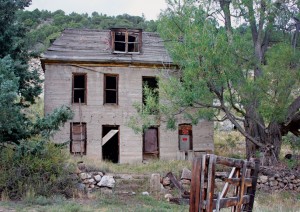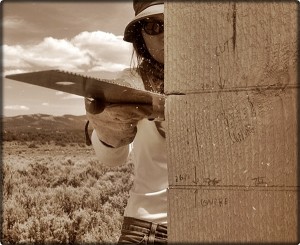By Virginia McConnell Simmons
In a narrative poem by Robert Frost, Warren and Mary are sitting on their porch, arguing about whether to let Silas return to the farm once again. He had been an unreliable hand, his wanderlust often causing him to go missing when he was most needed, like during haying time, and Warren complains that Silas doesn’t deserve another chance now. But Mary contends that they have no choice except to take him in.
“Home is where, when you have to go there, they have to take you in,” Mary says.
Silas had shown up earlier that day with his strength hanging by a frayed thread. Still, summoning a shred of dignity, he had told Mary that there was some work on the place that he needed to get done, like cleaning the ditch in the meadow. Never mind that by his looks, she didn’t believe that he actually could do it.
Like Silas, homeless people of all ages and in all circumstances need a place where someone will take them in, and the best-known haven in this entire region is La Puente Home in Alamosa. The hosts down there, however, do not debate about what people at the end of their ropes deserve or what they might have been able to do in different straits. The sign outside on State Avenue says “La Puente Home,” not “Shelter,” and for its guests, La Puente will become home for a while. In Spanish, the name means “the bridge,” a path over an obstacle or a low place.
If people need a bed, a meal, and a day or so to thaw out, La Puente gives it to them and helps them figure out what to do next. Where the car finally gave up the ghost and was left beside a highway is one of the easier questions to answer. Where someone last enjoyed a shower with hot water or snagged a Twinkie for a hungry kid is harder to say. When and where the children will attend a school will depend on whether some field work is available, and some of the guests who walk in the door will have chronic physical or mental illnesses, needing additional assistance from the community’s clinics and agencies.
The rate of homelessness in the San Luis Valley is nearly twice that of Denver’s and a small fraction of that of the other cities on the Front Range. In rural south-central Colorado, homelessness is increasing, not decreasing, and the San Luis Valley itself has the distinction of having Colorado’s counties with the lowest per capita income in the state. Nevertheless, each year one thousand men, women, and children from all over are welcomed at La Puente and will sleep in 10,000 clean beds and eat more than 40,000 plates of nourishing food. And each will be treated with respect.
Although quite a few of the Valley’s residents themselves may not be very rich, individual supporters, churches, nonprofit organizations, farmers and ranchers keep shelves filled at 13 food banks, operate two stores where used clothing and other goods can be purchased for pennies, run the Milagros coffee shop on Main Street, and support a wide range of outreach programs. La Puente’s activities benefit also by having about 20 young volunteers who come from around the nation and the globe annually. One of their worthwhile projects is the PALS Children’s Program, providing kids with fun, educational experiences and trustworthy companions, not just run-of-the-mill child care. Remembering that the largest growth in homelessness today is among families and children, the importance of PALS is easily understood.
The San Luis Valley has a big heart, and it can be seen best at the place called La Puente Home. Drop by sometime and join the guests for lunch. You will be welcome. www.lapuente.net g
Historian Virginia Simmons writes from the San Luis Valley.



